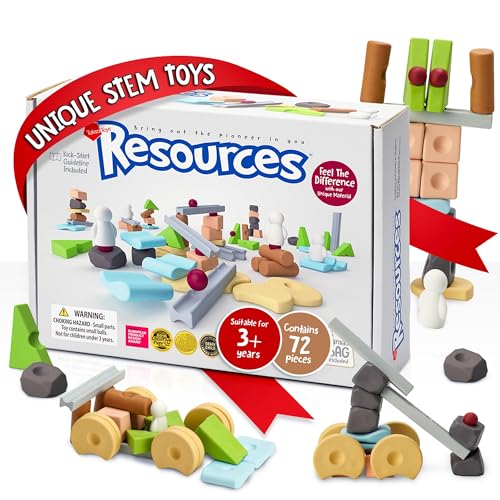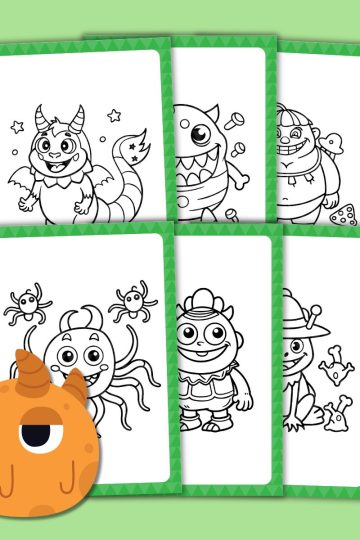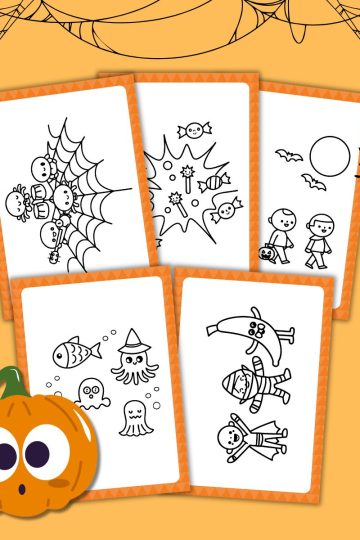Benefits of Loose Parts Play for Toddlers
Loose parts play represents a dynamic and innovative approach to early childhood education, transcending traditional toy-based engagements.
This form of play involves offering children an array of disparate items, without a predefined purpose, encouraging them to use their imagination and creativity to invent their own ways of playing.
From natural materials like sticks and stones to everyday objects like buttons and fabric scraps, loose parts play stimulates a myriad of developmental benefits.
This article delves into the core advantages of integrating loose parts play into the lives of toddlers and preschoolers, underscoring its significance in fostering creativity, critical thinking, and a host of other developmental milestones.
Jump to:
- The Essence of Loose Parts Play
- Sparking Creativity and Imagination
- Enhancing Fine Motor Skills and Coordination
- Promoting Critical Thinking and Problem-Solving
- Encouraging Social Interaction and Collaboration
- Fostering Independence and Self-Expression
- Cultivating Environmental Awareness
- Adapting to Diverse Learning Styles
- Loose Parts Play in Practice
The Essence of Loose Parts Play
Loose parts play is rooted in the theory that children benefit from interacting with various objects that can be moved, carried, combined, redesigned, lined up, and taken apart in multiple ways.
It’s about providing children with materials that have no specific set of directions, which encourages them to explore and create.
This play not only captivates children's attention but also serves as a foundation for lifelong learning.
This pack of wooden loose parts is perfect for sensory play and open ended play time. Crafted with durable material, this is a total steal for the price, and is sure to last you for years.
Sparking Creativity and Imagination
One of the most striking benefits of loose parts play is its ability to spark creativity and imagination in young minds.
When children are given the freedom to manipulate and transform loose parts into whatever they envision, they embark on a journey of creative exploration.
This form of play does not limit children to the functionalities of pre-made toys; instead, it opens a world of endless possibilities, fostering an inventive mindset that is crucial for problem-solving and innovation later in life.
Enhancing Fine Motor Skills and Coordination
Manipulating loose parts requires children to pick up, move, and place objects of various sizes and shapes, which is excellent for developing fine motor skills and hand-eye coordination.
These activities lay the groundwork for essential daily tasks, such as writing, tying shoelaces, and using utensils.
Through repetitive interaction with loose parts, toddlers and preschoolers refine their dexterity and gain control over their movements, contributing significantly to their autonomy and self-sufficiency.
Crafted with TPE safe material, this 72 piece set contains unique open ended parts inspired by nature. This one's great for building motor skills, understanding shape sorting, counting and even for sensory play.
Promoting Critical Thinking and Problem-Solving
Loose parts play naturally invites children to think critically and solve problems. As they engage with materials, they encounter challenges that require them to assess, hypothesize, and experiment with solutions.
Whether it’s figuring out how to balance objects to build a structure or determining which pieces fit together, children develop an analytical mindset.
This early exposure to problem-solving equips them with the skills to navigate complex situations and fosters resilience in facing obstacles.
Encouraging Social Interaction and Collaboration
When children play with loose parts in group settings, they learn valuable social skills such as sharing, negotiating, and collaboration.
This interactive play encourages communication as children express their ideas and listen to others, enhancing their ability to work as part of a team.
Through cooperative efforts, children learn the importance of empathy, understanding, and respect for diverse perspectives, laying the foundation for healthy social relationships.
Looking for something under $10? This pack of stacking stones works wonderfully for open ended and loose parts play. This is another great Montessori inspired gift too!
Fostering Independence and Self-Expression
Loose parts play empowers children by offering them the autonomy to make choices and direct their own play experiences.
This independence boosts self-esteem and confidence as children see their ideas come to fruition.
Additionally, it provides a safe and supportive environment for self-expression, where children can communicate their feelings, experiences, and understandings of the world around them through the medium of play.
Cultivating Environmental Awareness
Utilizing natural materials and recycled objects as loose parts not only enriches play experiences but also instills an early appreciation for the environment.
Children learn about the texture, weight, and flexibility of different materials, fostering a connection with nature and an understanding of sustainability.
This awareness encourages a sense of responsibility towards taking care of the environment, promoting eco-friendly behaviors from a young age.
Adapting to Diverse Learning Styles
Loose parts play is inclusive and versatile, catering to a wide range of learning styles and abilities.
Super affordable and versatile, this pack of wooden loose parts is another great buy. You can also put it to use to try some fun craft projects with your toddler or add them into sensory bins and bags.
Whether a child is a tactile learner who thrives on physical manipulation of objects, a visual learner who benefits from observing patterns and colors, or an auditory learner who enjoys the sounds of materials being combined, loose parts play offers something for everyone.
This adaptability ensures that every child can engage in meaningful play that supports their individual learning journey.
Loose Parts Play in Practice
Implementing loose parts play is both simple and cost-effective. It requires caregivers and educators to collect and provide a variety of materials that children can explore freely.
The beauty of loose parts play lies in its simplicity and the fact that the best resources are often everyday items that are readily available and inexpensive.
From kitchen utensils to cardboard boxes, the possibilities are endless.
The key is to ensure a safe and stimulating environment where children can unleash their creativity and curiosity.
The benefits of loose parts play for toddlers and preschoolers are vast and varied, encompassing cognitive, physical, social, and emotional development.
By embracing this approach to play, caregivers and educators can provide children with a rich tapestry of experiences that not only entertain but also educate.
Loose parts play is not just about playing; it’s about building the foundation for a lifetime of learning, creativity, and growth.
Loose parts are materials that can be moved, carried, combined, redesigned, lined up, and taken apart in various ways. They are open-ended materials that encourage creativity and imagination in children.
Loose parts play is important because it fosters creativity, imagination, problem-solving skills, fine motor development, social skills, and much more. It supports a wide range of developmental milestones in early childhood.
Yes, loose parts play can be easily incorporated into both indoor and outdoor environments. Natural materials like sticks, stones, and leaves are great for outdoor play, while household items like fabric scraps, buttons, and cardboard boxes are perfect for indoors.
To ensure safety, select age-appropriate materials and supervise play activities. Avoid small parts that pose a choking hazard for younger children and ensure all items are clean and free from sharp edges.
Loose parts play supports early education by providing children with hands-on learning experiences that promote critical thinking, language development, and understanding of mathematical and scientific concepts through exploration and discovery.
Looking for some fun activities and printables to keep your toddler busy? Here are a few good ones you might want to check out.














Comments
No Comments